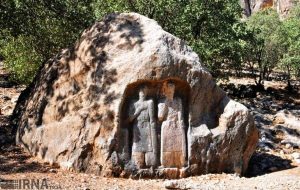Tang-e Sulak: a harmony of cultural heritage and landscape
TEHRAN – Tang-e Sulak, also known as Sarvak, is where the history and nature tell a timeless tale in Kohgiluyeh-Boyerahmad province, southwest Iran. Situated near Gachboland village, 12 kilometers northeast of Likak and 45 kilometers from Behbahan, the site offers a rich blend of ancient heritage and stunning landscapes, making it a treasured destination for


TEHRAN – Tang-e Sulak, also known as Sarvak, is where the history and nature tell a timeless tale in Kohgiluyeh-Boyerahmad province, southwest Iran.
Situated near Gachboland village, 12 kilometers northeast of Likak and 45 kilometers from Behbahan, the site offers a rich blend of ancient heritage and stunning landscapes, making it a treasured destination for history enthusiasts and nature lovers alike.
Historical significance
Tang-e Sulak dates from the Parthian era and it features remarkable bas-reliefs and inscriptions from Elymais and Parthians. The site boasts at least 14 bas-reliefs, including depictions of royal coronations, hunting scenes, fire altars, and assemblies of courtiers.
Highlights include the Bard-e Rostam bas-relief, showcasing a king hunting a lion and soldiers in intricate detail, and several inscriptions in Pahlavi script.
The artistry of these carvings, often compared to the grandeur of Persepolis, reflects the region’s importance during the Elymais and Parthian periods. The bas-reliefs also draw stylistic parallels to the Sassanid era, with scholars attributing some carvings to rulers such as Bahram II and Shapur II.
As mentioned by Visit Iran, Tang-e Sulak was first identified in 1841 by Russian explorer Baron Dubour, with subsequent studies by prominent Iranologists like Henning, who highlighted the site’s historical and cultural value.
The Parthian Empire, also known as the Arsacid Empire, was a major Iranian political and cultural power centered in ancient Iran from 247 BC to 224 CE.
Elymais was an ancient Parthian vassal state located east of the lower Tigris River and usually considered part of the larger district of Susiana. It incorporated much of the area of the biblical region of Elam, approximately equivalent to the modern region of Khuzestan.
Natural beauty and biodiversity
Tang-e Sulak is nestled in a breathtaking landscape of oak forests, adorned with rare and medicinal plants such as thyme, yarrow, and fritillaries. The region’s diverse wildlife includes wild goats, partridges, and various bird species. With its temperate microclimate, the area stands out from its surroundings, offering a haven for flora and fauna.
Numerous springs, such as the prominent Cheshmeh Gordak, irrigate the local pomegranate orchards and provide water for nearby villages. The site is surrounded by seasonal settlements like Abdooli, Sineh Sulak, and Chal Anjir, adding to its cultural charm.
A protected natural and cultural zone
Designated as a protected area by Iran’s Supreme Environmental Council, Tang-e Sulak spans over 2,000 hectares. Its rich biodiversity, combined with its historical relics, has earned the site recognition as a national natural monument. The lush forests, coupled with the ancient carvings, create an awe-inspiring experience for visitors.
Accessibility and attractions
Tang-e Sulak is accessible via routes from Likak, Landeh, and Gudban. A 2-kilometer paved road leads to the site, while a dirt road extends further into the defile, enabling easier access for tourists.
This area is a must-visit for those seeking a combination of Iran’s rich cultural heritage and natural splendor. Its enduring history, intricate bas-reliefs, and pristine environment make Tang-e Sulak a true gem, offering a unique journey into the past and a tranquil escape into nature.
AM
